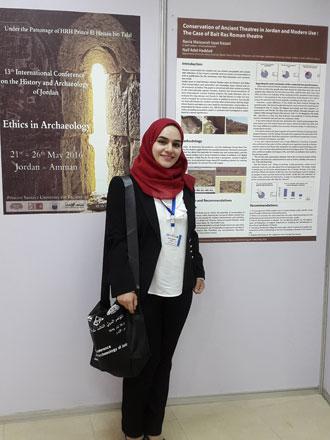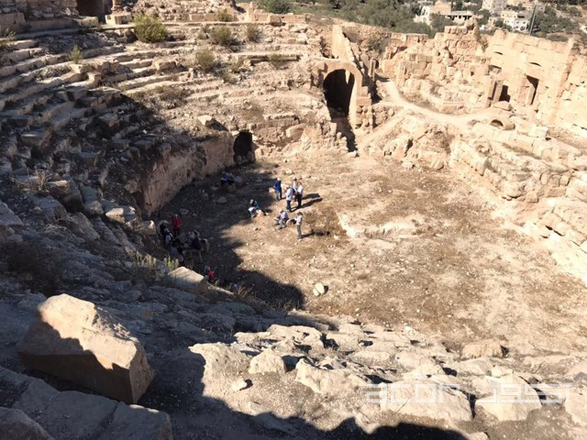You are here
Jordanian archaeologist calls for using Beit Ras theatre to support local economy
By Saeb Rawashdeh - Dec 14,2017 - Last updated at Dec 14,2017

Rania Nazzal
AMMAN — Beit Ras, north of Irbid, is one of the Decapolis cities in Jordan and has many monumental buildings from the Roman and Byzantine times, like the Roman theatre and Atheros Church, said Rania Nazzal, a Jordanian archaeologist at the Hashemite University.
Decapolis cities are a league of 10 ancient Greek cities established between 323BC and 63BC.
A conservator specialised in Roman theatres in Jordan, Nazzal studied the modern use of the theatre and its conservation, with a special focus on the one in Beit Ras known under the name “Capitolias”, she told The Jordan Times in a recent e-mail interview.
“From a conservation point of view, I have studied organic and non-organic problems that generally affect the theatre as a building,” she noted, adding that she suggested long-term and short-term conservation plans for the Roman theatre in Beit Ras.
Organic problems include the lichen, algae, and vegetation while non-organic stone decay can be caused by blistering, flaking, scaling, granular disintegration, honeycombs and exfoliation, Nazzal explained.
In Jordan, there are 13 Roman theatres located in Philadelphia (Amman), Gerasa (Jerash), Gadara (Um Qais), Petra, Pella (Tabaqet Fahl), Abila (Quilbeh) and Capitolias (Bait Ras), she stressed.
With a permission from the Department of Antiquities and advice from her academic mentor Naif Haddad, Nazzal interviewed members of the local community in Beit Ras to learn more about what residents think about the reuse of the Roman theatre.
“When I asked questions about the reuse of Bait Ras’ Roman theatre as a model to support the local economy through tourism or just to appreciate the monument from the aesthetic point of view, most of the locals agreed that both aspects are important and interconnected,” she recalled, adding that some even supported just the touristic value of the monument because they saw it as a boost to the local economy.
“Some local residents also expressed the opinion that they would use the theatre as a workshop to produce and sell souvenirs to tourists,” Nazzal highlighted.
The function of the building will also be socially enhanced by the cultural activities already held in Jerash and Amman theatres, she stressed, noting that events such as concerts, theatre performances, film projections and poetry recitals can be organised at Bait Ras theatre.
However, these manifestations must be carefully managed in order to promote and preserve the Bait Ras archaeological site, she emphasised.
To reuse the Roman theatre, many criteria should be taken into consideration, she underlined, adding that the conservation of heritage buildings needs funding bodies, local planning authorities’ policies on extensions and conversions, schemes for location and urban connections of the theatre to surrounding buildings.
Similar initiatives in the Mediterranean region (the ATHENA project for instance) have aimed to minimise the progressive decay of ancient theatres in terms of physical, cultural and socio-economic aspects under endorsing proper management plans, Nazzal claimed.
“In order to support the revival of theatres as a part of a wider archaeological or urban context, and to establish an overall strategy in dealing with tangible and intangible heritage aspects, above mentioned measures should be implemented,” Nazzal underscored.
Related Articles
AMMAN — Capitolias was one of cities of the Decapolis with Gadara (Umm Qais) and Gerasa (Jerash), and it is located some 10km north of Irbid
The Decapolis is a group of ten Greco-Roman cities on the eastern frontier of the Roman Empire, in the southeastern Levant, grouped tog
AMMAN — Despite the existing cultural link between Greece and the Levant, there is still room to boost awareness of the “civilisational inte














